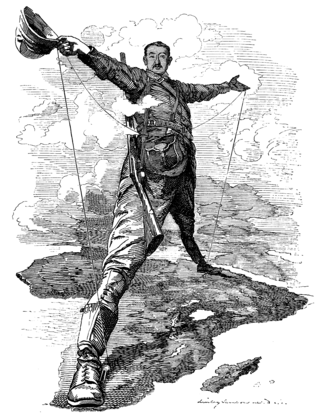
The influence and imperialism of Western Europe and associated states peaked in Asian territories from the colonial period beginning in the 16th century and substantially reducing with 20th century decolonization. It originated in the 15th-century search for trade routes to the Indian subcontinent and Southeast Asia that led directly to the Age of Discovery, and additionally the introduction of early modern warfare into what Europeans first called the East Indies and later the Far East. By the early 16th century, the Age of Sail greatly expanded Western European influence and development of the spice trade under colonialism. European-style colonial empires and imperialism operated in Asia throughout six centuries of colonialism, formally ending with the independence of the Portuguese Empire's last colony Macau in 1999. The empires introduced Western concepts of nation and the multinational state. This article attempts to outline the consequent development of the Western concept of the nation state.

Opium is dried latex obtained from the seed capsules of the opium poppy Papaver somniferum. Approximately 12 percent of opium is made up of the analgesic alkaloid morphine, which is processed chemically to produce heroin and other synthetic opioids for medicinal use and for the illegal drug trade. The latex also contains the closely related opiates codeine and thebaine, and non-analgesic alkaloids such as papaverine and noscapine. The traditional, labor-intensive method of obtaining the latex is to scratch ("score") the immature seed pods (fruits) by hand; the latex leaks out and dries to a sticky yellowish residue that is later scraped off and dehydrated. The word meconium historically referred to related, weaker preparations made from other parts of the opium poppy or different species of poppies.

The prohibition of drugs through sumptuary legislation or religious law is a common means of attempting to prevent the recreational use of certain intoxicating substances.
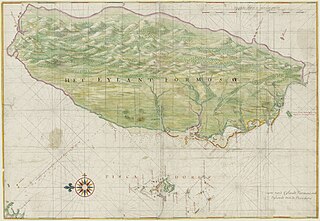
The history of the island of Taiwan dates back tens of thousands of years to the earliest known evidence of human habitation. The sudden appearance of a culture based on agriculture around 3000 BC is believed to reflect the arrival of the ancestors of today's Taiwanese indigenous peoples. People from China gradually came into contact with Taiwan by the time of the Yuan dynasty (1271–1368) and Han Chinese people started settling there by the early 17th century. Named Formosa by Portuguese explorers, the south of the island was colonized by the Dutch in the 17th century whilst the Spanish built a settlement in the north which lasted until 1642. These European settlements were followed by an influx of Hoklo and Hakka immigrants from Fujian and Guangdong.
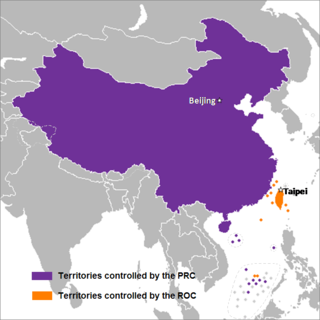
Chinese unification, also known as Cross-Strait unification or Chinese reunification, is the potential unification of territories currently controlled, or claimed, by the People's Republic of China and the Republic of China ("Taiwan") under one political entity, possibly the formation of a political union between the two republics. Together with full Taiwan independence, unification is one of the main proposals to address questions on the political status of Taiwan, which is a central focus of Cross-Strait relations.

The Treaty of Shimonoseki, also known as the Treaty of Maguan in China and Treaty of Bakan in the period before and during World War II in Japan, was an unequal treaty signed at the Shunpanrō hotel, Shimonoseki, Japan on April 17, 1895, between the Empire of Japan and Qing China, ending the First Sino-Japanese War.

The Penghu or Pescadores Islands are an archipelago of 90 islands and islets in the Taiwan Strait, located approximately 50 km (31 mi) west of the main island of Taiwan across the Penghu Channel, covering an area of 141 square kilometers (54 sq mi). The archipelago collectively forms Penghu County of Taiwan and is the smallest county of Taiwan. The largest city is Magong, located on the largest island, which is also named Magong.
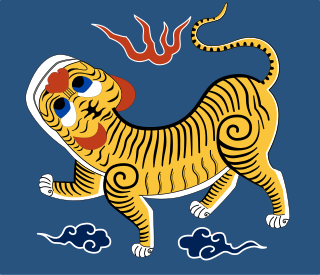
The Republic of Formosa was a short-lived republic that existed on the island of Taiwan in 1895 between the formal cession of Taiwan by the Qing dynasty of China to the Empire of Japan by the Treaty of Shimonoseki and its being taken over by Japanese troops. The Republic lasted 151 days; it was proclaimed on 23 May 1895 and extinguished on 21 October, when the Republican capital Tainan was taken over by the Japanese. Though sometimes claimed as the first East Asian republic to have been proclaimed, it was predated by the Lanfang Republic in Borneo, established in 1777, as well as by the Republic of Ezo in Japan, established in 1869.
Taiwan was under Japanese rule after the First Sino-Japanese War, as per the Treaty of Shimonoseki of 1895. There were still several changes until the Japanese political system was adopted in 1920. This system was de facto abolished in 1945 and de jure in 1952.
During the Meiji period, the new Government of Meiji Japan also modernized foreign policy, an important step in making Japan a full member of the international community. The traditional East Asia worldview was based not on an international society of national units but on cultural distinctions and tributary relationships. Monks, scholars, and artists, rather than professional diplomatic envoys, had generally served as the conveyors of foreign policy. Foreign relations were related more to the sovereign's desires than to the public interest. For the next period of foreign relations, see History of Japanese foreign relations#1910–1941.

The island of Taiwan, together with the Penghu Islands, became a dependency of Japan in 1895, when the Qing dynasty ceded Fujian-Taiwan Province in the Treaty of Shimonoseki after the Japanese victory in the First Sino-Japanese War. The consequent Republic of Formosa resistance movement on Taiwan was defeated by Japan with the capitulation of Tainan. Japan ruled Taiwan for 50 years. Its capital was located in Taihoku (Taipei) led by the Governor-General of Taiwan.

Count Gotō Shinpei was a Japanese politician, physician and cabinet minister of the Taishō and early Shōwa period Empire of Japan. He served as the head of civilian affairs of Japanese Taiwan, the first director of the South Manchuria Railway, the seventh mayor of Tokyo City, the first Chief Scout of Japan, the first Director-General of NHK, the third principal of Takushoku University, and in a number of cabinet posts. Gotō was one of the most important politicians and administrators in Japanese national government during a time of modernization and reform in the late nineteenth and early twentieth centuries.
Japanization or Japanisation is the process by which Japanese culture dominates, assimilates, or influences other cultures. According to The American Heritage Dictionary of the English Language, "To japanize" means "To make or become Japanese in form, idiom, style, or character". Historically, areas occupied by Japan were subject to long-term colonisation and assimilation with a few remaining Japanized post-World War II.
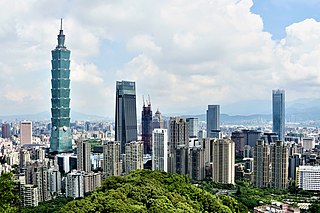
The recordkeeping and development of the economic history of Taiwan started in the Age of Discovery. In the 17th century, the Europeans realized that Taiwan is located on the strategic cusp between the Far East and Southeast Asia. Two main European empires that competed to colonize it were the Dutch and Spanish Empires. Taiwan also became an intermediate destination for trade between Western European empires and East Asia states. The history of Taiwan as a colony of the Dutch Empire, Kingdom of Tungning, Qing China, and Empire of Japan between 1630 and 1945 was based heavily on economics.
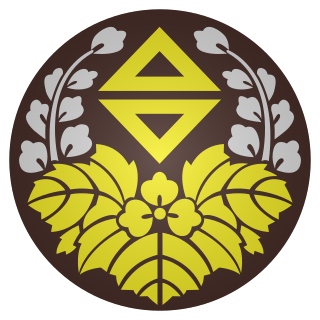
The Government-General of Taiwan was the government that governed Taiwan under Japanese rule between 1895 and 1945.

The territorial conquests of the Japanese Empire in the Western Pacific Ocean and East Asia began in 1895 with its victory over Qing China in the First Sino-Japanese War. Subsequent victories over the Russian Empire and German Empire expanded Japanese rule to Taiwan, Korea, Micronesia, southern Sakhalin, several concessions in China, and the South Manchuria Railway. In 1931, Japan invaded Manchuria, resulting in the establishment of the puppet state of Manchukuo the following year; thereafter, Japan adopted a policy of founding and supporting puppet states in conquered regions. These conquered territories became the basis for the Greater East Asia Co-Prosperity Sphere in 1940.

The history of opium in China began with the use of opium for medicinal purposes during the 7th century. In the 17th century the practice of mixing opium with tobacco for smoking spread from Southeast Asia, creating a far greater demand.

The Taiwanese Resistance to the Japanese Invasion of 1895 was a conflict between the short-lived Republic of Formosa (Taiwan) and the Empire of Japan. The invasion came shortly after the Qing dynasty's cession of Taiwan to Japan in April 1895 at the end of the First Sino-Japanese War.

Opium was first recorded in Singapore by a written document that record Stamford Raffles gifting opium to a local ruler in 1819 to establish Singapore. Opium then became accessible through trading and the opium farms in Singapore in the 19th century. It is one of the most traded good along the Sea Trade route after the end of the Opium Wars. With the rise of opium farms in Singapore, they acted as the middleman that help to process raw opium imported from British India, Persia, and Turkey to consumable opium and retail them to the Chinese coolies in local. In 1946, opium, including the tools, and opium dens are completely banned in Singapore. To treat the opium addicts, an Opium Treatment Centre was opened in 1955 and in 1989, the Singapore government extends the death penalty for opium traffickers.
















